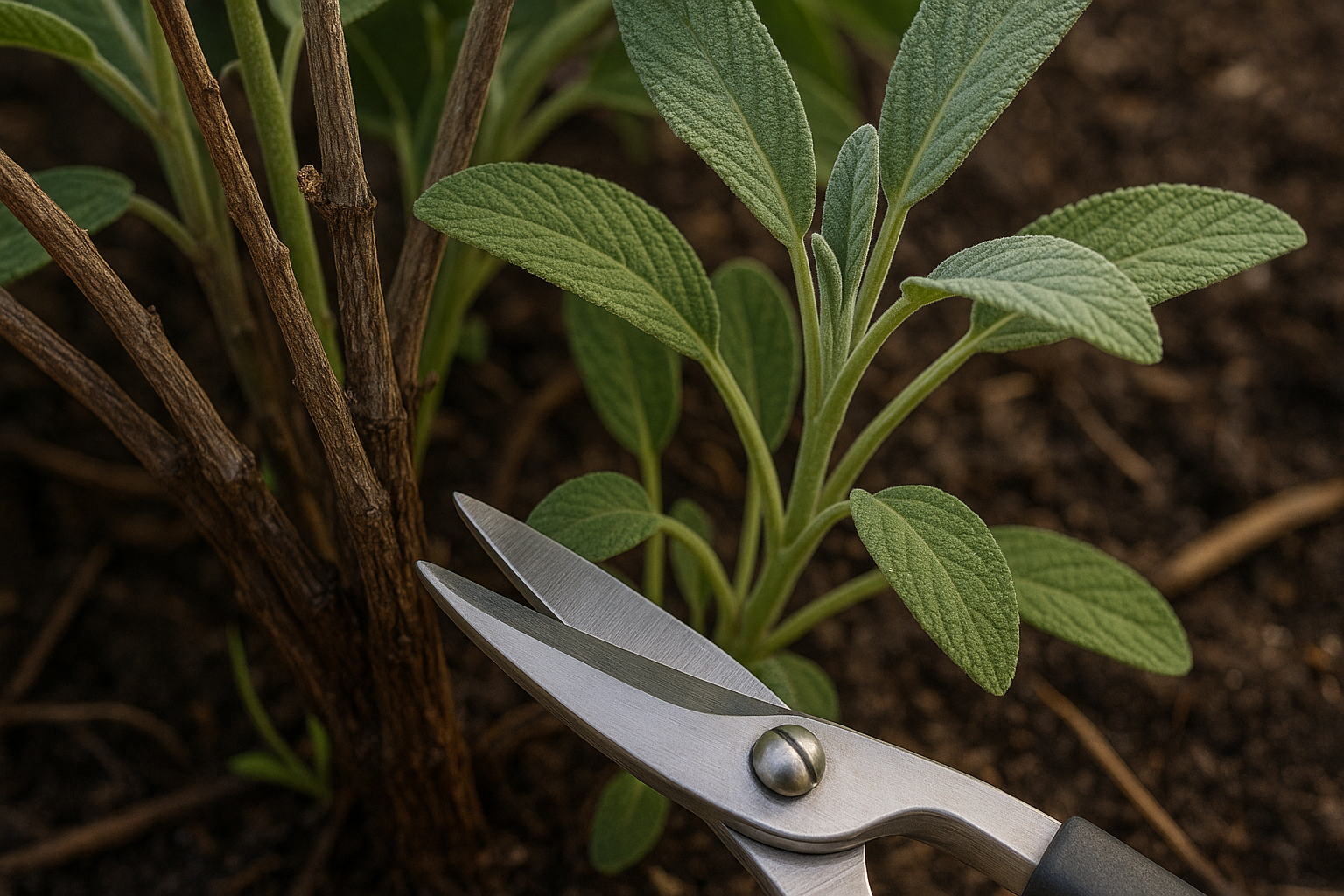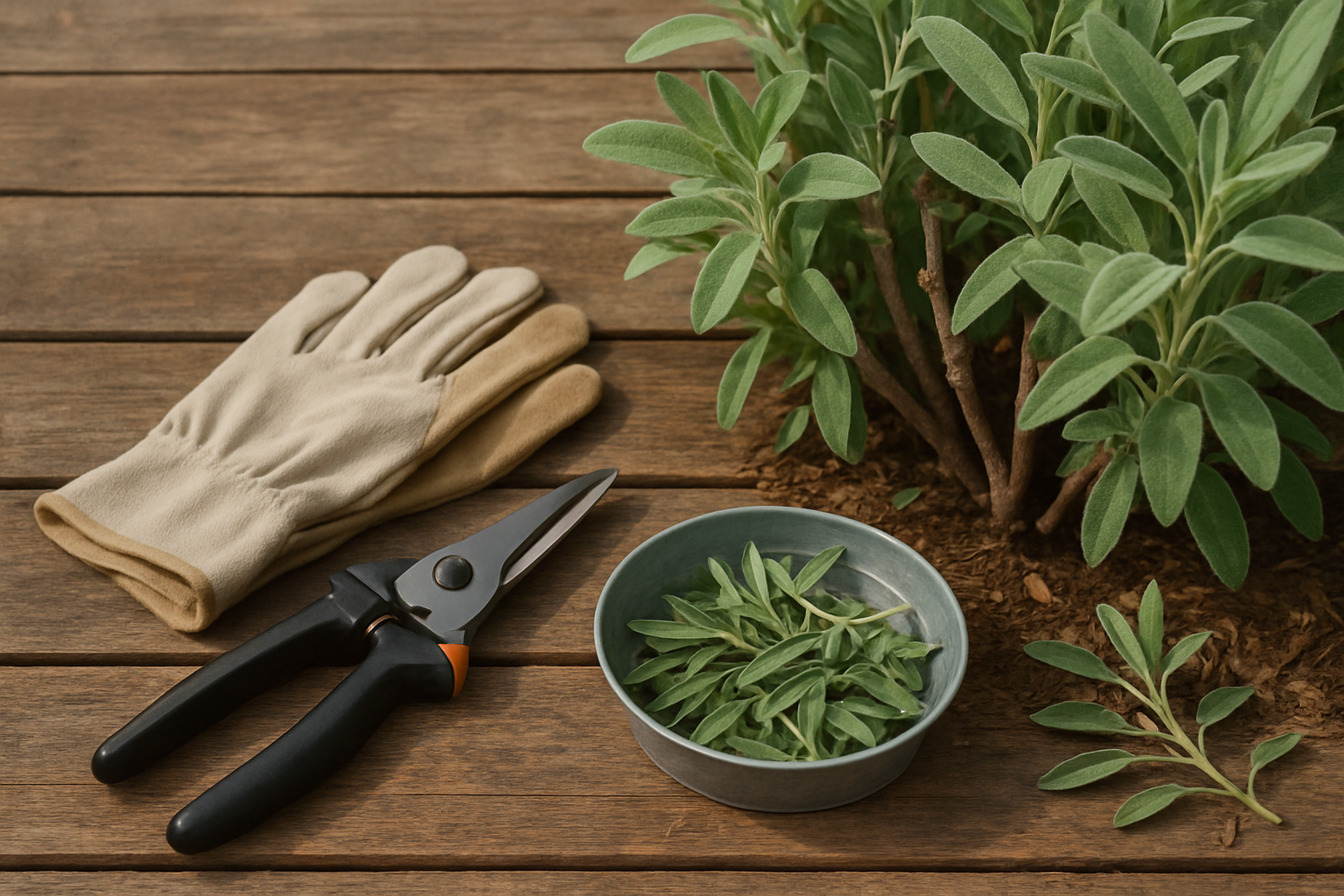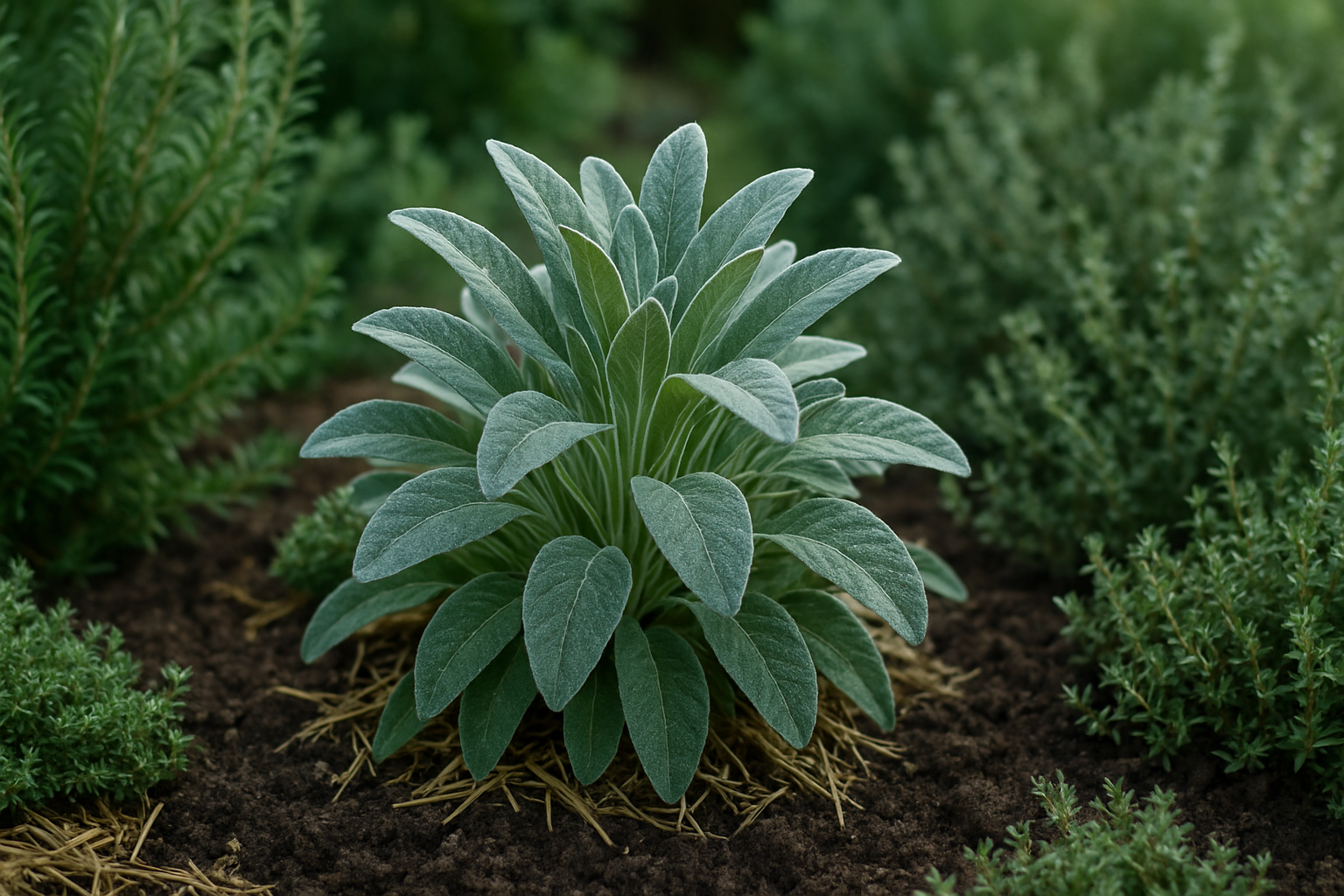Why Pruning Sage Matters

Sage is a beloved herb in both the kitchen and the garden, prized for its earthy aroma and its ability to elevate dishes like roasted meats, pasta sauces, and stuffing. In the garden, sage is a hardy perennial that adds texture and silvery-green color to beds while attracting pollinators. But to keep your sage plant thriving, regular pruning is essential.
Trimming sage might seem counterintuitive—won’t cutting it back stunt its growth? Actually, just the opposite is true. Pruning encourages sage to grow bushier and fuller, producing more tender leaves for culinary use and preventing the plant from becoming leggy or woody. When you selectively remove older stems, the plant redirects its energy into fresh growth, which results in leaves that are more aromatic and flavorful.
Healthy, well-pruned sage is less vulnerable to pests, diseases, and winter damage, effectively extending its lifespan by several years. Despite a common misconception, pruning does not harm sage—in fact, failing to prune can shorten the plant’s life by causing it to become scraggly and unproductive. For backyard gardeners, a simple trim in spring and after flowering is all it takes to reap these benefits.
So whether you grow sage for delicious seasoning or as an attractive, aromatic border, regular pruning is a straightforward way to boost both its beauty and utility in your garden.
When is the Best Time to Prune Sage?
Pruning sage at the right time helps keep your plant healthy and productive. The two best periods to prune sage are in early spring, just as new growth begins, and again after the plant finishes flowering in late summer or early fall.
In colder climates (USDA zones 4-6), it’s best to prune once you see new green shoots emerging at the base—this means the risk of frost has passed and the plant is ready to bounce back. Warmer climates (zones 7-10) might see new growth sooner, allowing for an earlier trim.
Watch for visual cues: healthy, green stems and leaves pushing up from the base signal it’s time to cut back old, woody growth. After flowering, you’ll notice the sage looking a bit scraggly or exhausted, especially if flower stalks start to droop or dry up. That’s a perfect moment for a tidy-up, encouraging bushier new growth before the plant slows down for winter.
Avoid pruning in late fall, as this can force tender new shoots that won’t withstand cold weather. To sum it up, prune in early spring and after flowering, but always let your local weather and the plant’s signals guide your schedule for the best results.
How to Prune Sage

Pruning sage regularly keeps your plant healthy and productive, and it only takes a few simple steps. Start by gathering the right tools: sharp, clean garden shears to make clean cuts, a pair of gloves to protect your hands from rough, woody stems, and a small bag or container to collect your trimmings.
Before you begin, inspect your sage for any dry or diseased leaves and remove these first, disposing of them away from your garden to prevent the spread of pests or disease.
Light Maintenance Pruning
For light maintenance pruning—which you can do throughout the growing season—snip off the top few inches of the stems, just above a pair of healthy leaves. This encourages bushier growth and helps you control the plant’s size and shape.
Harder Renewal Pruning
If your sage plant is getting woody and overgrown, perform a harder renewal pruning in early spring. Cut back up to one-third of the oldest, woodiest stems, making each cut just above a set of healthy, green leaves. Be careful not to cut into old, leafless branches, as sage rarely regrows from bare wood.
Pruning Tips
- Regular light pruning is best, as it allows new shoots to develop continuously and keeps your sage looking fresh.
- Avoid cutting more than one-third of the plant at a time, as this can shock the plant and slow regrowth.
- Always use clean shears to prevent spreading diseases.
- Never prune sage close to its base or during extreme cold, as this can cause lasting damage.
By following these steps, you’ll enjoy a lush, aromatic sage plant that’s perfect for both your garden and your kitchen.
Deadheading and Cutting Back
Deadheading and seasonal cutting back are two essential gardening techniques, but they serve different purposes in maintaining healthy, attractive plants. Deadheading means removing spent or faded flowers from a plant, usually by pinching them off with your fingers or snipping with clean scissors. The main goal is to prevent the plant from putting its energy into producing seeds, which encourages it to produce more blooms, keep flowering longer, and maintain a neat appearance—think of how your rose bush or petunias can burst back into bloom after you tidy them up.
On the other hand, seasonal cutting back involves trimming larger portions of the plant, sometimes entire stems or branches, usually at the end of a flowering cycle or growing season. This practice helps rejuvenate plants, encourages new growth, and prevents them from becoming leggy or scraggly. For example, after their flowers fade, perennials like coneflowers or salvia benefit from being cut down to just above the basal leaves to keep them compact and healthy.
Both deadheading and cutting back improve airflow and reduce the risk of disease by removing old, decaying plant material. Regular deadheading throughout the season keeps gardens vibrant and encourages more consistent harvests if you’re growing cut flowers, while timely cutting back helps plants store energy and come back stronger next season.
The overall result is a more productive, tidy, and inviting garden—plus less effort spent managing unruly or unhealthy plants down the line.
Common Mistakes and Expert Tips for Pruning Sage
Pruning sage isn’t complicated, but a few common mistakes can set your plant back. One major error is over-pruning—cutting away too much foliage or trimming into the old, woody stems. Sage doesn’t always recover well if you cut into wood that doesn’t have new growth, so always focus on green, flexible stems when pruning.
Another frequent mistake is ignoring your plant’s condition; diseased, stressed, or waterlogged plants won’t respond well to drastic pruning. The best time to tidy up sage is early spring, just as new shoots appear, or lightly after flowering in summer.
Use sharp, clean scissors to snip about a third of the plant, aiming just above a leaf pair to encourage bushy new growth. After pruning, water your sage lightly and consider adding a thin layer of compost to boost recovery.
For old or leggy sage plants that look sparse, don’t worry—revitalizing them is possible. Cutting them back by a third in early spring encourages new shoots. If the plant is very woody, prune in small stages over a few seasons rather than all at once, and give it extra care with good drainage and sunlight. Always remove any dead or diseased stems right away.
By focusing on green growth and being gentle with your cuts, your sage will reward you with a full, fragrant crop for culinary or garden use.
Growing Sage for Maximum Flavor and Health
Pruning is the secret weapon for growing sage with the richest aroma and taste, supporting not only leaf quality but also the plant’s overall health and longevity. When sage gets a trim every few weeks, especially in spring and early summer, it encourages bushier growth and keeps stems tender—ideal for cooking.
Start by pinching off the top few sets of leaves to prevent the plant from getting leggy, and always remove any flower buds as they appear, since flowering can reduce essential oil concentration (and thus, flavor) in the leaves. But pruning alone isn’t enough; sage craves well-draining soil and at least six hours of sunlight daily, so pick a spot that dries out between waterings and doesn’t leave roots soggy.
Water only when the top inch of soil feels dry, as sage prefers a bit of drought over constant dampness. When harvesting, use sharp scissors to snip young leaves in the morning for the best flavor profile—just don’t take more than a third of the plant at once to keep it thriving.
Surrounding your sage with companion plants like rosemary, thyme, or oregano not only saves space but also helps deter pests and enhances essential oil production, leading to more flavorful herbs. Mulching with organic materials like straw or small bark chips helps maintain stable soil temperatures and holds in just the right amount of moisture.
By combining regular pruning with these mindful growing techniques, you’ll enjoy robust, fragrant sage brimming with culinary and health benefits.
